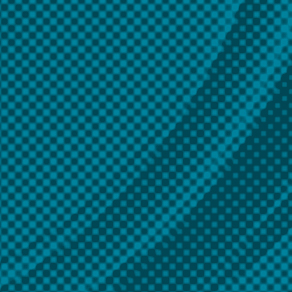



WORDS TO
THE WISE
Life Lessons from an Ad Man
05.25.12
I’m a big fan of TEDx talks. “Life Lessons from an Ad Man” by Rory Sutherland, vice chairman at Ogilvy Group UK, is one of my absolute favorites. He brings humor and insight to share how people make decisions and how advertising influences them. He also references one of my favorite books, Nudge: Improving Decisions about Health, Wealth, and Happiness.
Hear one of the real Mad Men at work, and enjoy the long weekend!
Does Where You Sit Shape How You Think?
05.15.12
Does sharing a workspace – or plopping down on a couch instead of at a desk – make you more creative?
I’ve pondered this since reading a Wall Street Journal article about companies shedding permanent offices and cubes in favor of more fluid arrangements – like communal tables and unassigned desks. As more employees start to work remotely and on flexible schedules, this is a smart, cost-cutting move. Still, some workers miss having a space to decorate and call their own.
When I worked in communications at a large nonprofit, I shared a cube with several teammates – a setup that naturally encouraged collaboration. Calling brainstorms is effortless when everyone can swivel their chairs around to face one another. We also had several couches nearby. Sometimes, the change of scenery from sitting there was enough to get creativity flowing. Earlier in my career, when I worked in a newsroom, I thrived on the buzz of the reporters and editors around me – with no boundaries except low, paper-thin cube walls.
At Linda Costa Communications Group , I have my own office, which offers privacy and freedom to focus intensely on projects. Our team gathers frequently for brainstorms – usually around someone’s desk or at one of the office conference tables.
There’s a certain camaraderie that comes from rubbing shoulders with co-workers. But it’s also easier to waste time chatting. And, depending on your personality, spending all day in close proximity to others may be anything but productive and fun.
To me, the issue of workspace setups boils down to the tension between creativity and focus, between constant interaction and interruption-free time. Our jobs demand both, and it’s tough to find a balance. Right now, I’m enjoying my little corner of the CCG office. It’s starting to feel a lot like my second home.
Staff writer Mary enjoys spreading out odds and ends (including multiple coffee cups) on her desk without worrying about cube-mates thinking she’s messy.
Give Them What They Want or Give Them What You Think They Need?
05.09.12
I was super excited when I heard about The Pitch before it came out. I even put it on my calendar (I’m a type-A planner all the way). But life happened. Other DVR’d shows happened. (I’m looking at you, Mad Men). But last night, I finally got a chance to watch The Pitch.
Caution: Spoilers ahead.
To briefly summarize, episode three featured “The Clockwork Account” – where recently acquired Clockwork Home Services was looking to generate business while maintaining their three current brands. The two competing agencies, Houston-based FKM and Toronto-based The Hive, couldn’t be more different. Whereas FKM took an “all-hands-on-deck” approach, including a 24-hour sequester without cell phones and the ability to leave the building, The Hive used key personnel to formalize one idea.
Besides the obvious dissimilarities in the agencies, the show pin-pointed a dilemma that often arises in the world of advertising and public relations: Is it better to give a client what they want or to give them what we think they need? Often, the two concepts are completely different.
In this case, The Hive soft-pitched an idea the client specifically did not want during their “tissue session” four days prior to the final pitch. Clockwork Home Services quickly axed it, resulting in lost time and momentum for the agency. FKM followed the creative brief, came up with several ideas and narrowed it down to one. FKM’s CEO explained:
“[The pitch] should be about the brand, not us or our great ideas.”
This error on the part of The Hive might have cost them the account. Or it could have paid off. I’ve seen it happen both ways. They say that big risks garner big rewards …
What do you think?
One Man’s Trash is Another Man’s Account
05.03.12
In this week’s episode of AMC’s The Pitch, two agencies competed to work with Waste Management (WM). The mission was to educate consumers – specifically a younger demographic – about how they convert trash into energy. We’ve asked Linda Costa Communications Group employees to take turns sharing their thoughts on each episode. Up this week: Jenni.
Caution: Spoilers ahead.
SK+G’s “Trash Talk” ad blended traditional and new media perfectly. As soon as I saw it in action, I had a pretty good feeling that they’d win the account. It was clear that they honed in on WM’s goal of attracting a younger demographic by using new media. But, I was still rooting for The Ad Store. “Trash Can” was so simple (in retrospect, probably too simple) and clever (two WM executives commented on the immediate feeling it brought on). The guerrilla marketing photos (“What can power this apartment for three nights? Trash can.”) were smart and achieved WM’s goal of educating.
But there’s more to it than just ads. After seeing just two episodes, I’ve noticed a trend: The Pitch is about much more than winning accounts. The producers are also giving us a look at how agency life affects home life. In the first episode, we saw McKinney’s Liz Paradise balance motherhood and long hours. Last night, we witness the young son of SK+G’s Doug Hentges run outside crying after his father gets called back to the office (easily past 11 p.m. at this point). We also see a sensitive side of The Ad Store’s Paul Cappelli as he discusses his fear of failing.
Had this been a Hollywood movie, I think The Ad Store would’ve won the account. (Also, it’s worth noting that at the time of this blog post, 71 percent of voters on AMC.com think they should have.) In my opinion, they were introduced as somewhat of an underdog. Cappelli shared that if they didn’t get the WM account, that they would probably be closed in three months. (Luckily, the last scene of the episode says that they did land a major account three days after losing WM.) Aside from being the underdog, Cappelli talked a lot about passion – specifically saying, “You can’t teach passion. You have to hire it.” That, and an employee’s observation that The Ad Store was like a “big family,” stood in stark contrast to SK+G’s obvious tension and constant power struggle between the two creative directors. Did anyone else expect the WM executives to comment on the latter? Watching the presentation from my couch was uncomfortable; I couldn’t imagine being in the boardroom.
What was your overall feeling about The Pitch?
What We’re Watching: “The Pitch”
05.02.12
AMC’s newest reality TV show, “The Pitch,” follows ad agencies from around the country as they compete to win work from major clients. At Linda Costa Communications Group , we’ve been watching with rapt attention, and we plan to post our thoughts on the episodes. In the pilot, two agencies –McKinney and WDCW – pitch their concepts to Subway to increase awareness and sales of its breakfast sandwiches among the 18-24-year-old demographic. Of course, we know we didn’t see the full story – just an hour-long version of it – but here’s what fascinated us:
Creative culture at agencies differs widely. It’s eye-opening to see how other agencies operate. McKinney struck us as a place where you pay your dues before earning respect … and develop a thick skin until then. By contrast, WDCW seemed more nurturing of younger staffers and their ideas.
The 18-24 age range is critical. It’s telling that the first episode featured Subway hearing pitches from ad agencies in an attempt to capture the brand loyalties of this age group. Subway executives openly stated that locking in the preferences of young adults during their formative years would be essential to the new breakfast line’s success. We predict we’ll see a lot of companies targeting this demographic this season.
Great ideas come from all over. We liked the geographic diversity of the agencies featured – and seeing how regional sensibilities bring fresh ideas to the table. McKinney is headquartered in the college hub of Raleigh/Durham/Chapel Hill, North Carolina, while WDCW hails from the urban, west coast settings of Seattle and Los Angeles. It would be interesting if future episodes showed an agency with international offices – or even one based overseas.
Proven results win the day. McKinney turned to YouTube for research and found winning inspiration in Mac Lethal, a Kansas City rapper known for his spots about pancakes and eggs. The fact that his video already had earned 23 million views bumped this concept to the top. If we were the ones spending millions of dollars on a campaign, we’d want to know it was going to be well-liked. The proven success behind this concept is a big part of why Subway execs bought the idea.
If we’ve made you curious about the show, you can catch it Mondays at 9 p.m. Or, if you watched it, what did you think?
